Hibiscus plants, with their vibrant blooms and lush foliage, are a favorite among gardeners. However, these beauties are not immune to pests and diseases that can hinder their growth and flowering. Understanding these common issues and their treatments is essential for maintaining a healthy hibiscus plant.
1. Aphids: The Tiny Green Menace
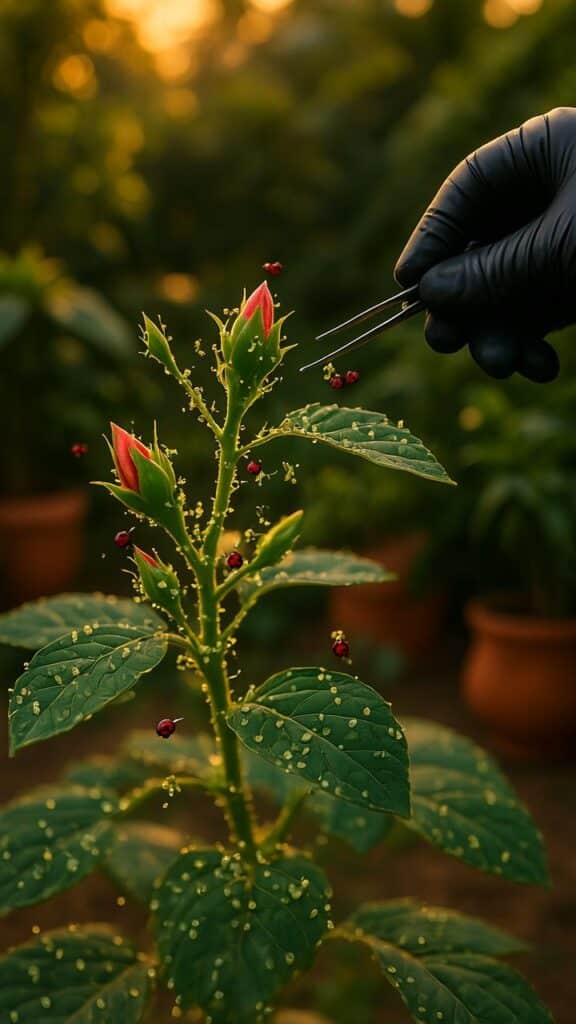
Aphids are small, soft-bodied insects that often appear in clusters on the undersides of hibiscus leaves. They feed on the plant’s sap, leading to curled, yellowed leaves and stunted growth. Additionally, aphids excrete a sticky substance called honeydew, which can attract other pests and promote the growth of sooty mold.
Treatment Methods:
- Insecticidal Soap or Neem Oil: These are effective treatments for aphids. Apply them to the affected areas, ensuring thorough coverage.
- Encourage Natural Predators: Ladybugs and lacewings feed on aphids. Attracting these beneficial insects can help control aphid populations.
- Regular Inspection: Check your hibiscus plants regularly for aphids, especially during the growing season. Early detection can prevent severe infestations.
2. Mealybugs: The Cotton-Like Culprits
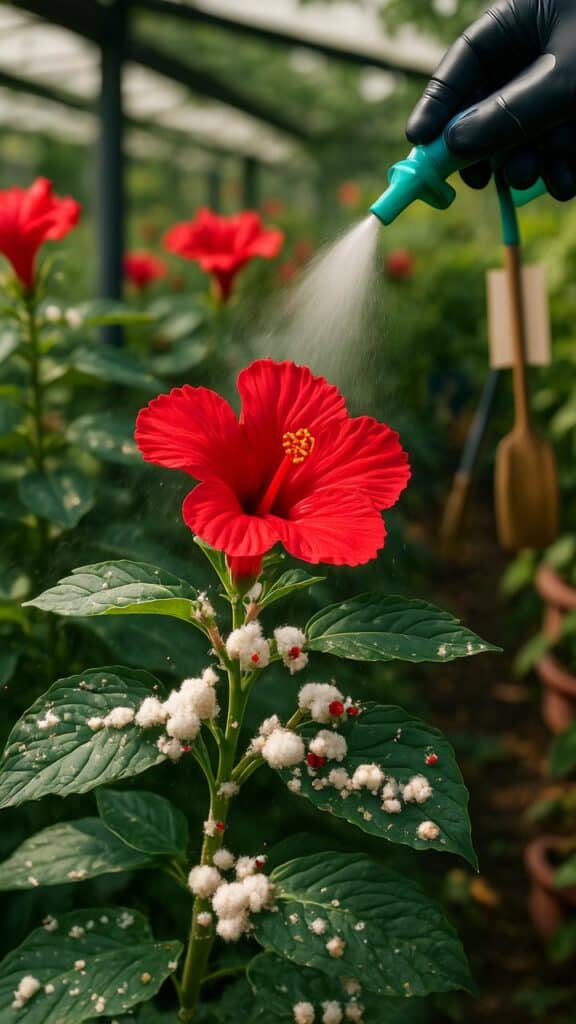
Mealybugs are small, white insects that appear as cotton-like masses. They often infest the leaf joints and stems of hibiscus plants. Mealybugs feed on plant sap, weakening the plant and potentially leading to yellowing leaves and stunted growth.
Treatment Methods:
- Insecticidal Soap or Neem Oil: These treatments can effectively eliminate mealybugs. Apply them directly to the pests and surrounding areas.
- Isolate Infected Plants: If you notice a mealybug infestation, isolate the affected plant to prevent the pests from spreading.
- Encourage Natural Predators: Certain wasps and lady beetles prey on mealybugs. Introducing these predators can help control the population.
3. Spider Mites: The Tiny Web-Weavers
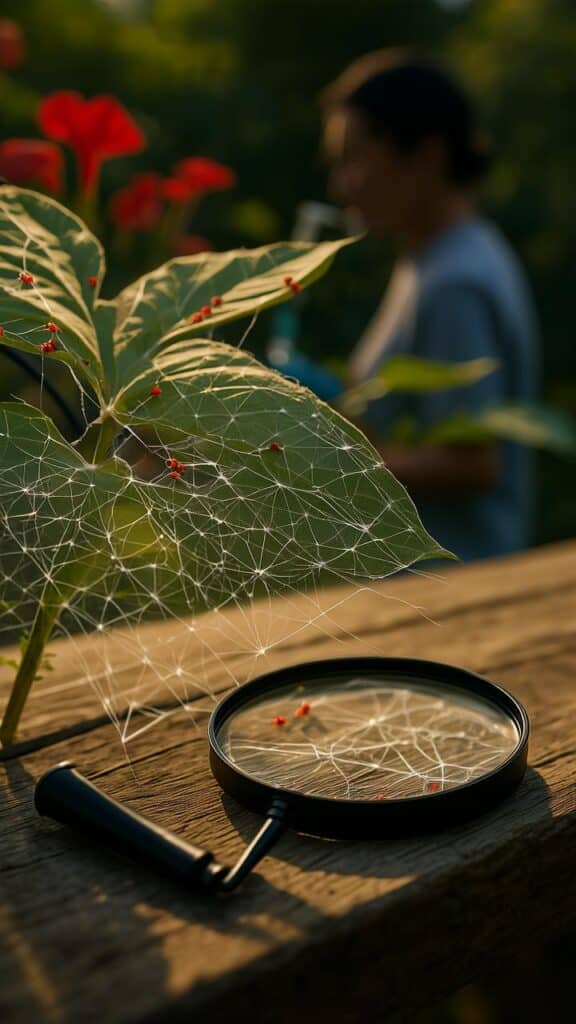
Spider mites are tiny arachnids that can cause significant damage to hibiscus plants. They feed on plant sap, leading to yellowing leaves and fine webbing on the undersides. Severe infestations can cause leaves to drop prematurely.
Treatment Methods:
- Insecticidal Soap or Neem Oil: These treatments can help control spider mites. Ensure thorough coverage, especially on the undersides of leaves.
- Regular Watering: Spider mites thrive in dry conditions. Maintaining consistent soil moisture can make the environment less hospitable for them.
- Increase Humidity: Spider mites prefer low humidity. Increasing humidity around the plant can deter them.
4. Whiteflies: The Silent Flyers
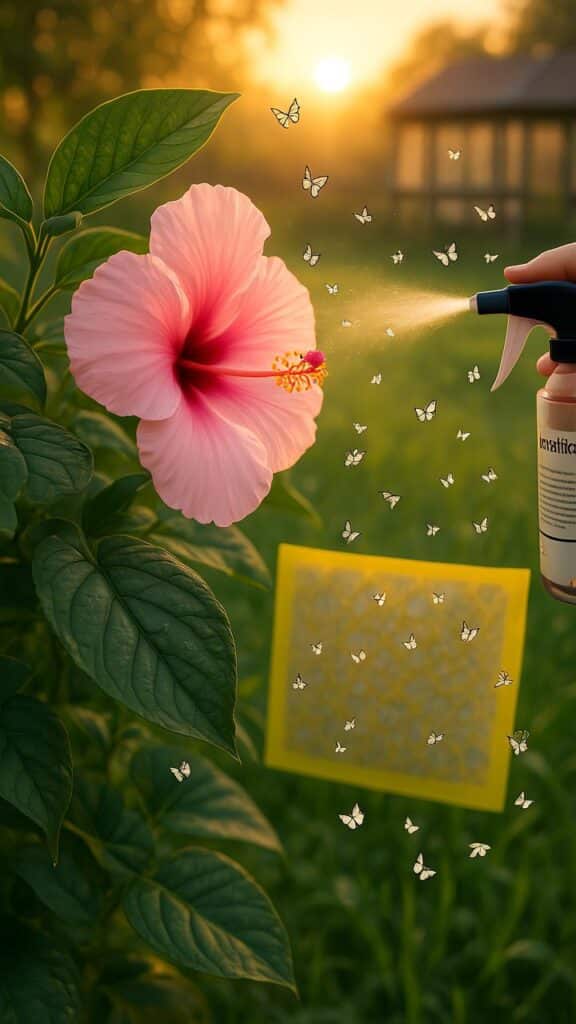
Whiteflies are small, white insects that resemble tiny moths. They feed on the sap of hibiscus plants, leading to yellowing leaves and a sticky residue called honeydew. This honeydew can attract fungal growth and other pests.
Treatment Methods:
- Insecticidal Soap or Neem Oil: These treatments can effectively eliminate whiteflies. Apply them to the affected areas, ensuring thorough coverage.
- Natural Predators: Encourage the presence of natural predators like ladybugs and lacewings, which feed on whiteflies.
- Reflective Mulch: Using reflective mulch around the base of the plant can confuse whiteflies and deter them from landing.
5. Thrips: The Bud-Breaking Bandits

Thrips are tiny, slender insects that feed on the sap of hibiscus plants. They often infest flower buds, leading to bud drop and distorted blooms. Thrips can also cause scratches on the plant’s surface.
Treatment Methods:
- Insecticidal Soap or Neem Oil: These treatments can help control thrips. Ensure thorough coverage, especially on the flower buds.
- Spinosad: This is a natural insecticide that can be effective against thrips. Use it according to the manufacturer’s instructions.
- Regular Monitoring: Check your hibiscus plants regularly for signs of thrips, especially during the blooming season.
6. Leaf Spot Diseases: The Fungal Foes
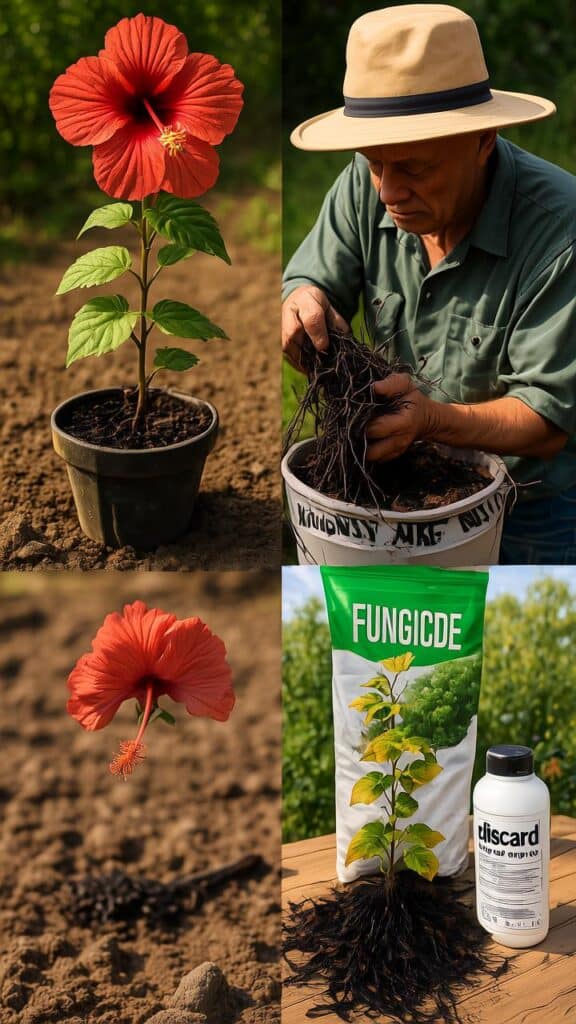
Leaf spot diseases are caused by various fungi that infect hibiscus plants. These diseases lead to brown or black circular or irregular-shaped spots on the leaves. Infected leaves should be removed and disposed of to prevent the spread of the disease.
Treatment Methods:
- Fungicides: Apply fungicides like Mancozeb (Dithane M45, Manzion, Manzate) to the affected areas. Follow the manufacturer’s instructions for application.
- Proper Spacing: Ensure adequate spacing between plants to promote air circulation, which can help prevent fungal growth.
- Watering Practices: Water at the base of the plant to keep foliage dry, as wet leaves can promote fungal growth.
7. Wilt Disease: The Root-Rotting Risk
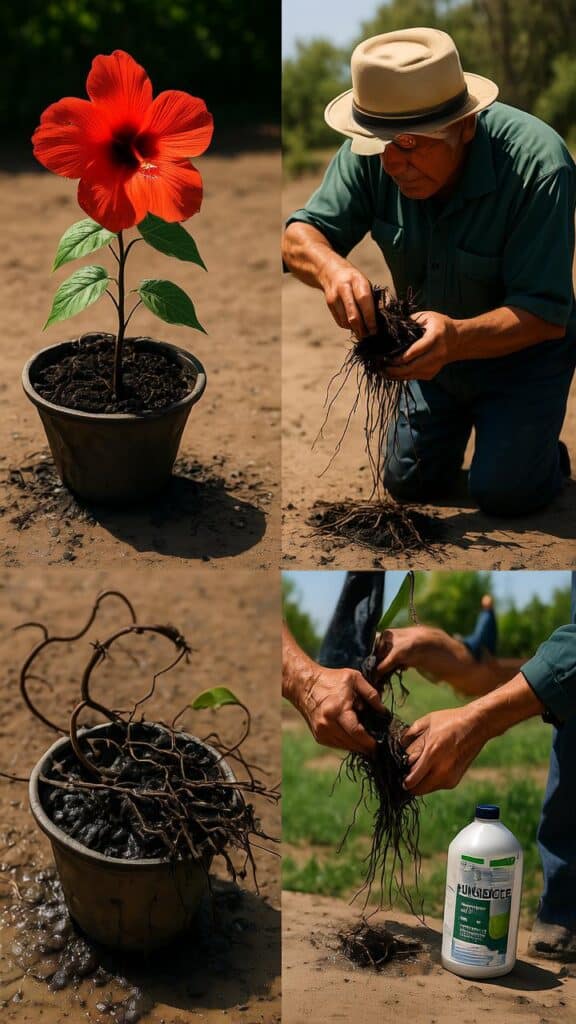
Wilt disease is a fungal infection that enters hibiscus plants through the roots. This disease impairs the plant’s ability to circulate water properly, leading to wilting and dying leaves. The leaves may turn dark green or black rather than yellow.
Treatment Methods:
- Remove Infected Plants: If wilt disease is detected, remove and dispose of the infected plant to prevent the spread of the disease.
- Improve Drainage: Ensure the soil drains well to prevent water from accumulating around the roots, which can promote fungal growth.
- Avoid Overwatering: Water the plant only when the top inch of soil is dry to the touch. Overwatering can lead to root rot and other issues.
By staying vigilant and addressing these common pests and diseases promptly, you can ensure that your hibiscus plants remain healthy and continue to produce their stunning blooms. Regular maintenance, proper care, and early intervention are key to keeping these plants thriving.
